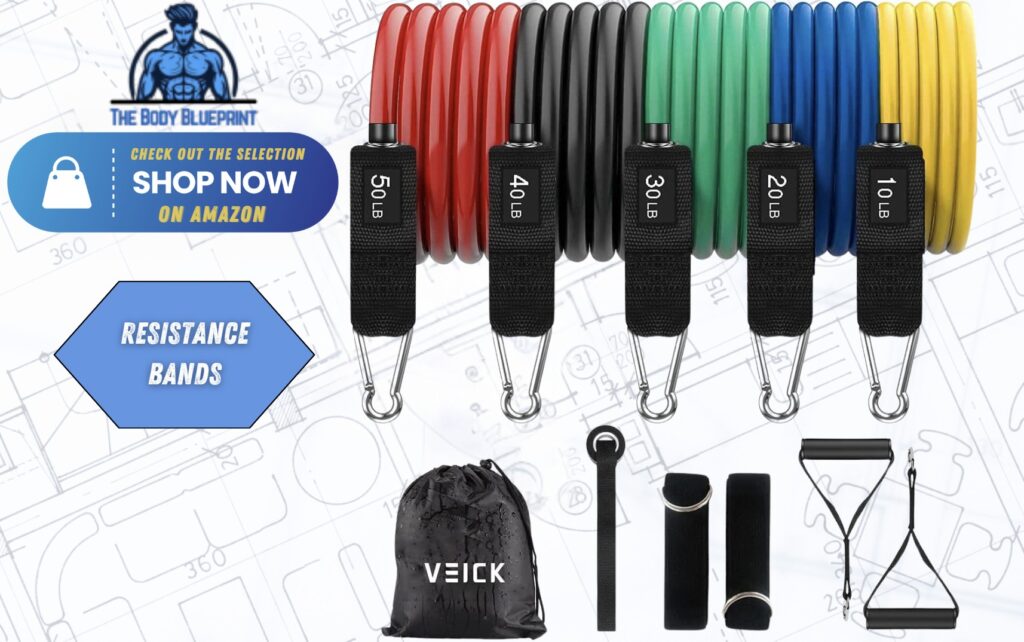Defying Gravity: How Resistance Bands Rewire Men’s Strength (No Gym Required)
You’re standing in your garage at 6 AM, half-awake, staring at a tangled heap of dumbbells. The gym’s 20 minutes away—if traffic’s kind. But what if the power to forge a stronger, leaner, more resilient body wasn’t buried under plates or hidden behind a membership card? What if it coiled quietly in your grip, a rubberized whisper of potential?
Resistance bands are the Swiss Army knife of fitness—portable, adaptable, and deceptively brutal. They’re not just for physical therapy or warm-ups. For men who want to build muscle, torch fat, and move like a predator without chaining themselves to a rack, bands are the sleeper hit of functional strength.
“Resistance bands force your muscles to work in ways free weights can’t,” says Eugene Thong, CSCS. “They’re tension on demand—like having a coach pulling against you every rep.”
Let’s cut through the noise.
The Physics of Flex: Why Bands Outsmart Gravity
Imagine bench-pressing a barbell. The hardest part? The midpoint. But with bands, tension builds exponentially as you stretch them. The lockout—where most guys cheat—becomes a gauntlet. Your muscles scream. Your mind sharpens.
The Science of Variable Resistance
- Traditional Weights: Constant load, limited by weakest joint angle.
- Resistance Bands: Escalating tension, max effort at full extension.
“Bands mimic real-world strength,” says Charles Damiano, B.S. Clinical Nutrition. “Life isn’t a fixed load. You lift groceries, shift furniture, play with your kids—bands prepare you for that chaos.”
6 Benefits That Hit Like a Sledgehammer (Without the Bulk)
1. Muscle Growth Meets Matrix-Level Control
Forget “toning.” Bands force eccentric overload—the golden child of hypertrophy. When you lower slowly against resistance, microtears form. Repair them, and muscle grows.
Try This: Anchor a band to a door. Do a slow-motion banded push-up—3 seconds down, 1 second up. Feel your chest ignite.
2. Joints That Move Like They’re Oil-Rigged
Bands lubricate stiff shoulders, creaky knees, and rusty hips. Unlike weights, they pull joints into alignment.
Pro Tip: Loop a band above your knees during squats. Feel your glutes wake up? That’s your body relearning primal mechanics.
3. Portable Gym, Zero Apologies
Stuck in a hotel? Park? Your kid’s soccer game? Unfold a band.
“I’ve trained CEOs in airport lounges with a single band,” says Thong. “No excuses. Just raw effort.”
4. Injury-Proofing Your Machine
Bands don’t crush spines or strain tendons. They’re forgiving yet relentless—perfect for rebuilding after injury or avoiding it entirely.
5. Cardio That Doesn’t Suck
Pair bands with bodyweight for metabolic mayhem.
The 5-Minute Finisher:
- Banded squat jumps (20 sec)
- Push-up rows (20 sec)
- Rest (10 sec)
Repeat 5x. Welcome to hell.
Bands vs. Weights: The Cage Match
| Metric | Free Weights | Resistance Bands |
|---|---|---|
| Portability | Low (Heavy, bulky) | High (Fits in a pocket) |
| Versatility | Moderate (Fixed moves) | Extreme (1000+ exercises) |
| Joint Stress | High (Compressive) | Low (Tension-based) |
| Progressive Load | Plate-by-plate | Stretch further or layer |
| Cost | $$$ | $ |
The Unspoken Truth: Bands Make You Think
Free weights are linear. Bands are chaotic. They buck. They twist. They demand stabilizer muscles you forgot existed.
“Your brain works harder with bands,” says Damiano. “You’re not just lifting—you’re negotiating. That’s where real power comes from.”
Programming Your Comeback: A 4-Week Blueprint
Phase 1 (Weeks 1-2): Foundation
- Focus: Master form. Anchor bands to doors, poles, or your feet.
- Sample Move: Banded Pallof Press (anti-rotation core drill).
Phase 2 (Weeks 3-4): Escalation
- Focus: Add loops. Combine bands for skull-crushing resistance.
- Sample Move: Banded Deadlifts (wrap bands under feet, grip ends).
Quotes to Fuel the Fire
- “Bands are the great equalizer. Young athletes, desk warriors, retirees—they all find a new edge.” — Eugene Thong
- “Nutrition builds muscle. Bands uncover it.” — Charles Damiano
Your Band Arsenal: A Cheat Sheet
- Loop Bands (For glutes, mobility)
- Tube Bands (With handles for presses, rows)
- Flat Bands (Heavy-duty pulls, anchor moves)
- Mini Bands (Prehab, arm sculpting)
The Final Rep
Resistance bands aren’t an “alternative” to weights. They’re evolution. They’re the tool of men who value efficiency, intelligence, and grit. The kind of men who don’t just want to look strong—but to be strong, anywhere, anytime.
So coil that band. Stretch it. And let the tension forge something new in you.
Affiliate Disclaimer: below is our Amazon affiliate link. You click, you buy, you pay ZERO extra. Still get Prime deals, discounts, and your gains. Meanwhile, I may get a tiny commission, so I can keep dumping free value bombs. No guilt trips—just mutual hustle. Now go crush it.

